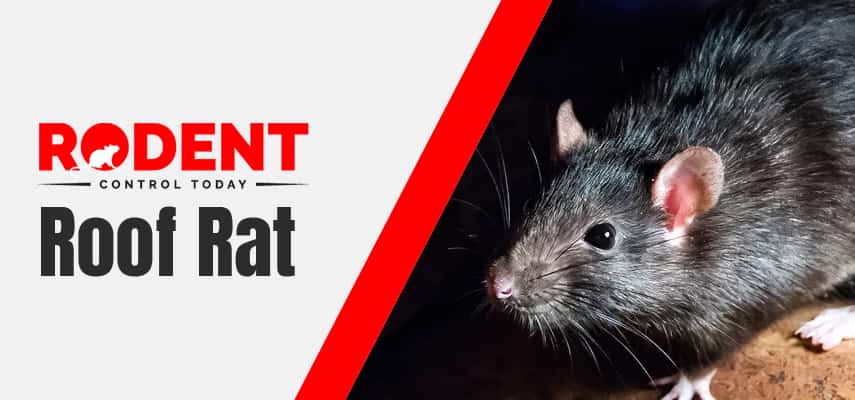Introduction
The roof rat (Rattus Rattus) is very close in morphology to its cousin Brown Rat but smaller in size. They like to form shelters in the upper parts of the building where they cause a huge amount of damage to materials and spread a number of diseases. Also known by the names House Rat or Ship Rat or Black Rat.

Appearance
They look long and in terms of size, they are 12 to 18 inches in length and around 5 to 12 ounces in weight. Their body is thin and long with a scaly tail, large eyes and a pointy nose. Fur belonging to Roof Rats are smooth and brown coloured with spots of black and white colour from the outside and black or grey inside. They possess a greyish to white coloured belly.
Look Alike Species
Brown Rat: They are the most similar or look-alike species of Roof Rat which live in urban areas basically near humans. Their fur is grey or brown coloured with a lighter shade inside and has double the weight of roof rats. They have small ears and short tails but poor eyesight. They can be able to carry various diseases which may also affect humans.
Habitat
They always choose aerial positions to live in as compared to Brown rats such as trees or vine-covered fences. Roof Rats are often found to live in parks, reservoirs, citrus groves, riverbanks, artificial ponds, sugarcane fields, etc. They are known to infest rice fields, farm buildings and other industrial sites. For entering your home, they get access to the overhead utility lines through which they travel from place to place.
Breeding Behaviour
Their breeding occurs throughout the year and their period of gestation is about 21 to 23 days after conception. They mostly breed in spring and fall and prefer to form their nests off the ground. They give birth to 6-12 offspring once and 5 to 8 young in the litter develop rapidly. The offspring become hairless at the time of birth and with closed eyes which open between 9 and 14 days. Within a period of 4 to 5 weeks, the young ones learn what to eat and it is taught to them by their mother. After the age of 3 months, they became independent of their mother and reproductively matured.
Food Habits
They feed nearly all food items but their food preferences are different and so they are referred to as omnivorous animals. They eat their food outside which is the same as tree squirrels because they feed on large varieties of fruits and nuts. Roof rats also like to eat various types of vegetable parts and native plant materials.
Status In Australia
As the name describes, they cause a great amount of damage to the property mainly in the upper areas. When they enter the kitchen, they feed on stored foods and they may disable the unit by gnawing electrical wires when entering a refrigerator.

Fun Facts
- They are noisy creatures and so they will squeak loudly when they feel threatened and when socialising.
- Roof rats can run at a speed of 8 mph and use their tail to balance themselves.
- These rodents spend their daytime sleeping in their nests and come outside at night in search of prey.
